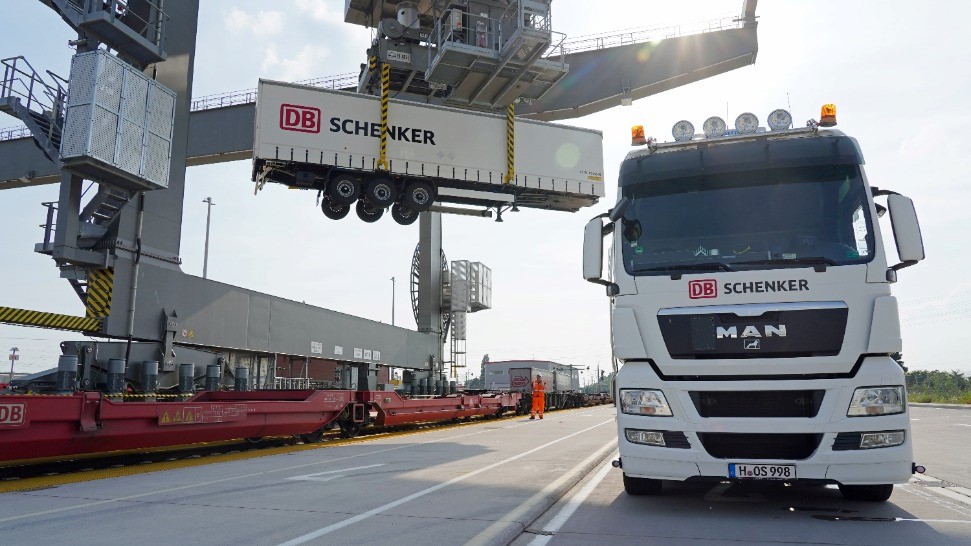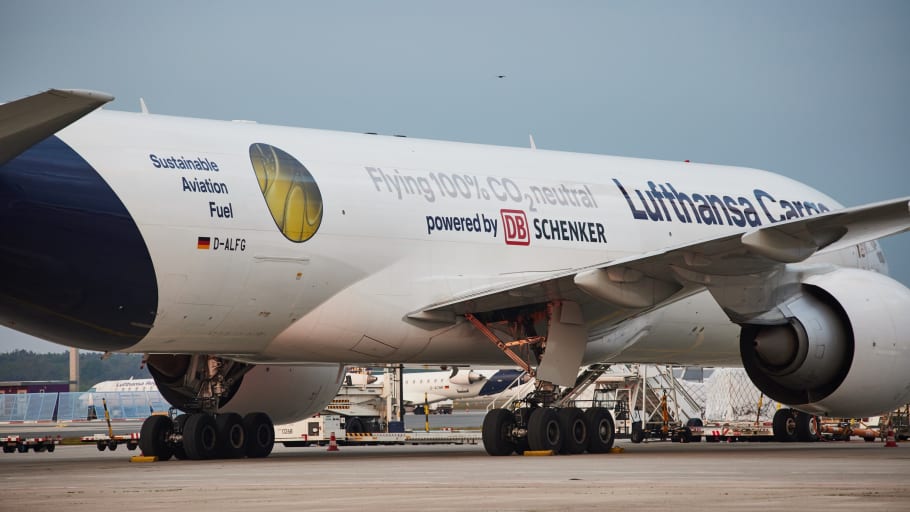DB Schenker aims to keep its freighters flying
28 / 07 / 2023

Asok Kumar. Source: DB Schenker
How did Covid change airfreight and how can the logistics industry protect and maintain air cargo supply chains during any future pandemic?
Those are the questions being considered by air cargo professionals and their customers as Covid-induced supply chain disruption and sky-high airfreight rates become a footnote in history.
Freight forwarder DB Schenker operated its own freighter network during the pandemic and took the decision to maintain a slightly reduced operation post-Covid in response to customer demand but without damaging commercial relationships with airlines.
One airline cargo boss recently speculated that some freight forwarders were committed to their own-charter networks because they had two years or more to run on their freighter aircraft leases and that was a key factor in maintaining the schedule rather than taking a hit on early termination of the lease.
Asok Kumar, head of airfreight at DB Schenker, says: “There is no doubt that operating a freighter is more challenging now as airfreight rates are coming down from the peak. But there is another component in offering an own-controlled capacity solution to the customer.”
Kumar says that forwarders such as DB Schenker can fly into less congested secondary airports where airfreight has a higher priority than at a major passenger hub, and so retain full control of the supply chain.
DB Schenker’s own-network freighters were put in place primarily to meet Covid demand, and although the capacity situation has changed, Kumar is convinced that the strategy should continue: “Do we still require those solutions in supporting the customer? Yes, we do.
“Our customers tell us that the need to have such own-control capacity is still very relevant, not just because of access to reliable capacity and just-in-time shipments but also for just-in-case. Just in case there is another major disruption where everything goes wrong again.”
Financial control
One legacy is that during the pandemic rush for air cargo, the finance organisations of the customers became more directly involved in negotiations around procurement as airfreight often replaced disrupted ocean freight and resulted in additional costs.
Kumar says: “The cost of supply chain and logistics services increased dramatically during Covid, and we found that a lot of finance organisations became involved in procurement which was previously not so prevalent or apparent. Before Covid it was pretty much the logistics professionals who would do the cost analysis and everything else.”
Those new players in the negotiation process had quite a different approach to procurement, says Kumar, who also believes that the changes in procurement are likely to remain, despite a substantial post-pandemic drop in logistics costs.
“Even if the costs have come down, many of our customers’ finance organisations will still be involved in influencing, controlling and managing the process.”
He continues: “It is coming very much from a cost perspective, and when you devise and re-design a supply chain solution it is not just the per kilogram cost of the product that has to be managed, because there are a lot of other costs involved in airfreight which are not so visible.
“These finance professionals may not see the less obvious aspects of reinventing a supply chain. They might believe that these aspects are already factored into their decisions, but if they only focus on the cost itself, their procurement methods will be different.”

Photo: DB Schenker
In a related theme, sustainability has become a key factor in air cargo, but it comes with added cost. Are airfreight shippers prepared to pay for the extra cost of sustainability?
Says Kumar: “Sustainability is very high on our agenda, and we are putting that message across very strongly, not only to the customers but also to our carrier partners. We need to have appropriate solutions and in airfreight, sustainable aviation fuel (SAF) is the main way forward.
“There are customers who are willing to pay more for their air shipments to have it covered with SAF. And there are other customers who are more cautious in this regard.
“So, you have a mixed bag and recent feedback from one of our key customers was that they look at their entire supply chain when it comes to sustainability. When they look at their product range, a component of carbon emissions comes from the production of their goods and there is the component in moving their goods to the end market.
“When they assess the entire end-to-end process, it is often the production side of their goods that is generating the most CO2 emissions. So, their focus and investments are directed there.”
DB Schenker has now operated more than 200 full charter SAF one-way flights between Frankfurt and Shanghai which were 100% CO2 neutral.
Says Kumar: “That is a big commitment, and it is still the world’s only regular full charter freighter flight covered by SAF.”
In terms of the two key topics currently facing airfreight, digitalisation is now sharing significant industry bandwidth.
Getting digital
On digitalisation, Kumar says: “Yes, data is knowledge and knowledge is king, that’s what we say and that is a major part of our digitisation strategy.
“In this industry, data is everywhere. It can be found in government customs systems and is being collected by many forwarders with different types of customers and on different systems.
“But if you can amalgamate all that data, then your ability to generate predictive analytics is very much enhanced.
“We are actively looking at predictive analytics. Into how we can use this data. Not just on knowing what happened last week but perhaps more importantly on looking forward to seeing what can happen next week or even the weeks after. That is the way ahead.
“I agree that it is very important, and we need to have the right systems and processes to make sure that we can get all that data together.”
Aviation and many global industries were not prepared for a pandemic, but air cargo showed that it could respond quickly and preparation for future crises is required.
Says Kumar: “Our customers are saying thank you for coming up with great solutions during the pandemic. Now we need contingency plans because who knows what is going to happen next.
“We did have a whole suite of detailed contingency plans in place during Covid, but we still need to have a certain component available even post-Covid.
“For example, our focus on secondary airports in strategic locations. That approach was introduced during Covid and will continue to be a backbone of our charter activities.”
And while many secondary airports do not have a large number of passenger flight bellyhold connections, they still have one big advantage: rapid ground handling of air cargo.
“We can take advantage of these congestion-free freighter friendly airports in terms of how quickly we get the freight through the warehouse onto trucks and for final delivery.
“Those are significant advantages that we can leverage at a secondary airport.
“We always choose a secondary airport that is in a strategic location. For example, if I look at Rockford airport in the US, with a maximum two-hour trucking time from Chicago, it has the kind of catchment area that you want for air cargo.
“Even after the peak of Covid there are lot of people wanting to use Rockford. Because we were the first movers, we were well-positioned, and this worked extremely well.”

Lufthansa Cargo and DB Schenker team up on SAF flights
Asked if DB Schenker is assessing additional secondary airports for its freighter network, Kumar says that the “concept of an increased focus on secondary airports is here to stay”, adding that discussions are ongoing in the US and in Europe, while Asia – China and Southeast Asia – does not have so many potential secondary hubs.
The concept of forwarders operating their own freighter networks is not new, and it was first experimented with in the 1980s, albeit at a smaller scale.
The experiment failed because airlines, mainly those with freighters of their own, were unhappy with the competition and warned of retaliatory action on capacity against the forwarders.
That does not seem to be the case today. Says Kumar: “Certainly none of our partner carriers have gone that far. I need to state the following statistic to put things into perspective. During Covid, only 17% of our freight moved on DB Schenker’s own controlled network, so 83% still moved with our partner carriers.”
He also makes the point that the DB Schenker network worked to support their partner carriers in terms of volume growth and that carriers have not seen any drop in the cargo volumes they received from the forwarder.
Will there be a peak?
As we enter the second half of 2023, Kumar was asked about the sentiment of air cargo customers for the remainder of the year and the traditional peak season.
He says: “Everyone has their own crystal ball, but I see things picking up and not getting worse. I would say that it depends upon the industry sector, for example automotive versus hi-tech and pharmaceuticals.
“Many customers assume that we have reached the end of a declining phase. And if you talk to shippers, you will find that they tend to be more optimistic than pessimistic about the end of the year.
“I see it getting a little bit busier. I am looking forward to having a peak season again, even though it will of course be nothing like the exceptional peak in 2021.”
This year there will be a “muted peak season”, says Kumar, who compares it to 2022 “when there was literally no peak”.
He observes: “I think one big component of why the freight flows have declined is because inventory levels have been stubbornly high since September last year.
“We are now potentially coming to the end of that. In the third and fourth quarter of 2023 the inventory-to-sales ratio may become thinner and once that happens, people will ship again.”
Asked about the effect of the war in Ukraine on the airfreight market, Kumar states: “It is an ongoing situation. A lot of flight routes have been diverted south and so journeys take longer, but we have now come to a point where we are living and working with the situation and have built solutions for our customers that cater for their individual supply chains.
“The solutions are running well and we’re just continuing with them from a supply chain perspective.”
DHL Deutsche Post has expressed a strong interest in DB Schenker if the latter comes onto the market. What would be the potential challenges or opportunities if the industry speculation became a reality?
“What I can say is that there is an official process, as our owner DB has started to examine a potential sale, but nothing has been decided yet.
“Therefore, we are not on sale at the moment, and I will not participate in any speculations about the future outcome of DB’s examination process.”













